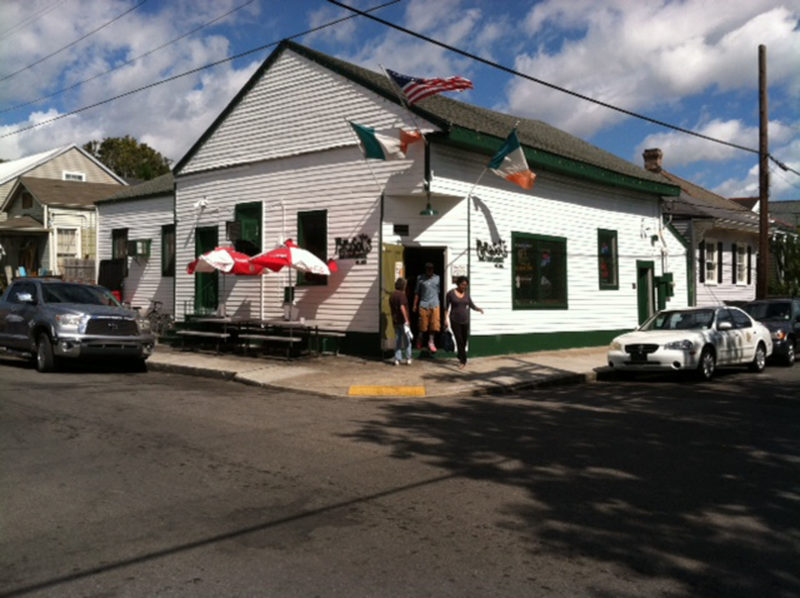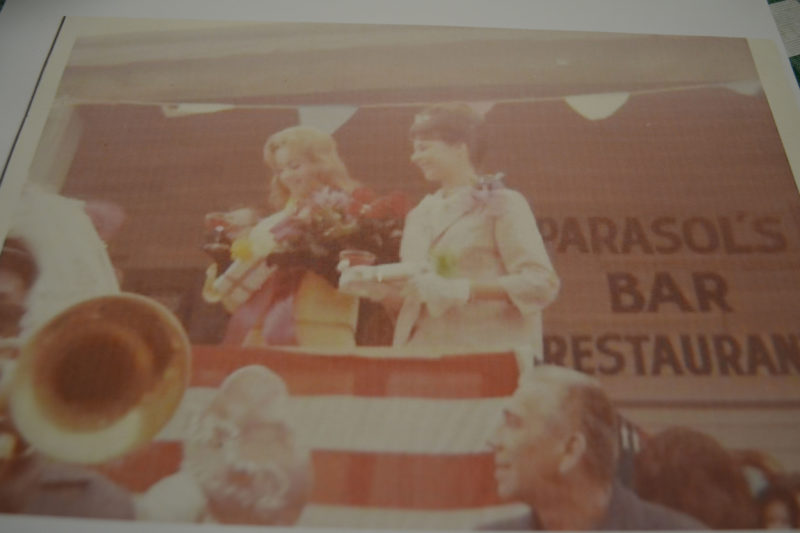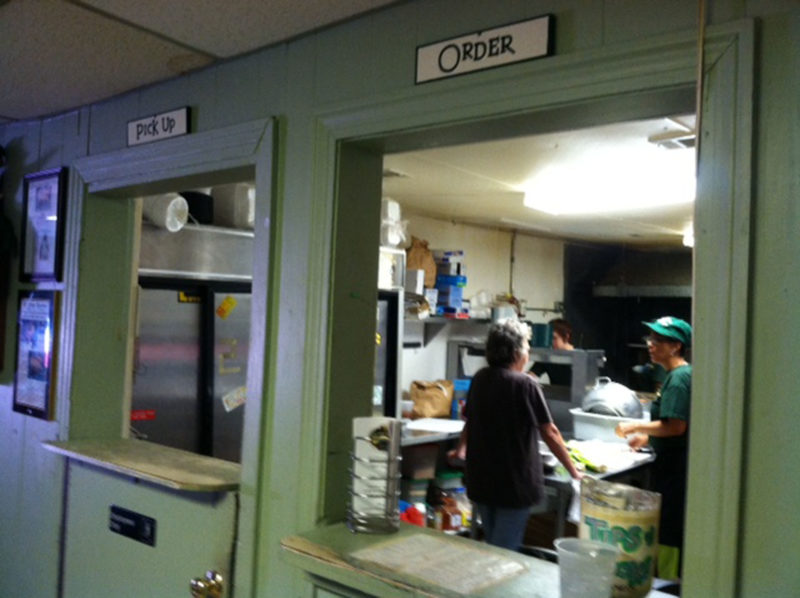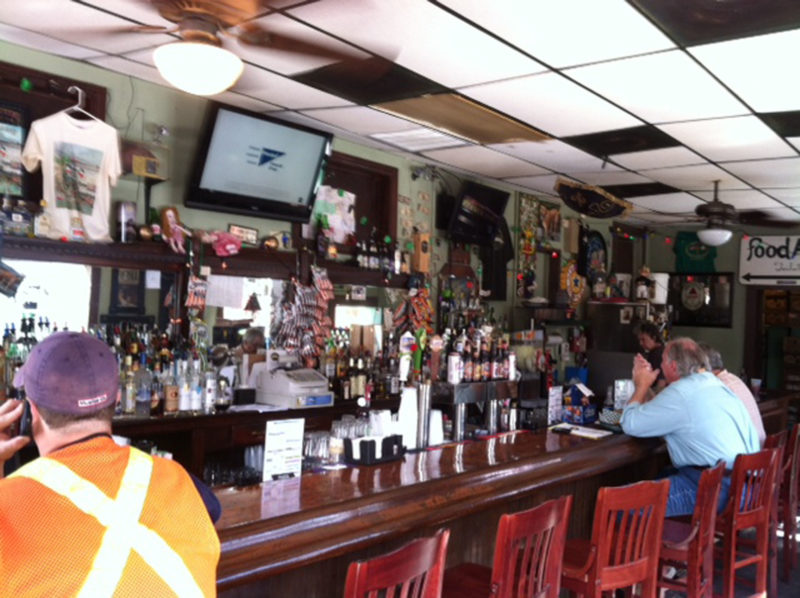
Corner entry of Parasol’s at Third and Constance Streets. Photo by Lindsay Giradeau.
Parasol’s is an Irish bar located on the corner of Third and Constance in the Irish Channel. Although it is located on a sparsely populated side street of Magazine, it remains a popular spot for locals and anyone who visits. Originally, Parasol’s was a house in which the first owners of the bar, Louis and Myrtle Passauer, lived. There are many different origin theories of the name “Parasol’s.” One of these theories was that Louis was concerned that no one would be able to pronounce the name “Passauer,” so Louis and Myrtle named the bar “Parasol’s” instead. However, many will argue that the name originated from memories of Grandpa Passauer constantly carrying around a parasol (Personal interview with John Hogan, Owner of Parasol’s, 1 Oct. 2012). Nonetheless, the significance of Parasol’s is not in its name, but what Parasol’s does for its patrons. Everything began when the Passauers turned their porch into the bar that became Parasol’s.
The Irish Channel

History hanging on the walls. Photo by Lindsay Giradeau.
The neighborhood surrounding Parasol’s is most commonly known as the Irish Channel. Although very few know where the “actual boundaries” of the Channel originated historically, today people see them as bordering Magazine to the River, and then Washington to Jackson from Uptown to Downtown. After the Civil War, the Irish Channel reached its prime. The famine was over in Ireland, and immigrants began working on the New Basin Canal because of the traditional skill set and cheap labor. Many of those who did not work on the Canal maintained the wharfs along the riverfront thus residing nearby their workplace (Campanella, Richard. 2006. Geographies of New Orleans: Urban Fabrics Before the Storm. Lafayette, LA: Center for Louisiana Studies). The Irish Channel became a tight, residential community, with facades close to the street and backyards for livestock. The elaborate gingerbread detail of the shotgun houses gave the inhabitants a way to “dress up” their houses and personalize the cramped space they called home. Today many of the houses are quaint detailed dwellings reminiscent of popular vernacular styles of the time and also giving the channel its eclectic ambiance. Keeping in mind the variety of styles, it is important to note that even though this was the Irish Channel, there were strong German and Irish sections dominating the area, as well as groups of African America residents in the post slavery era. With the rise of the highway and decline of the railroad, those who no longer needed the low wage industrial work moved to the suburbs, losing much of the Irish population (Campanella). Today the channel consists of a multitude of ethnicities, income levels, and age ranges in the area. Despite this shift, Parasol’s, known as an Irish Bar, has outlived nearly all of the other corner bars in the neighborhood.
The Evolution of Parasol’s

Kitchen and food pick-up window. Photo by Lindsay Giradeau.
From 1946 to 1952 the corner of Constance and Third Street served home to Tracy’s Bar, but the story really began when Louis and Myrtle Passauer, a Dutch-German family, bought the place and expanded their house. The house was extended about three feet down and out to the street to provide a bar and then a storage room later. The family served sandwiches out of a window from the family kitchen and into the drink area all day long (Personal interview with John Hogan, Owner of Parasol’s, 1 Oct. 2012). The original house’s front door faced Third Street, now serving as the side service door, and what might have once been the living room and dining area is the present day restaurant space. An awning once surrounded the entry but was torn down after Hurricane Katrina.
St Patrick’s Day and Hurricanes
Parasol’s is best known for its Saint Patrick’s Day Parade. Although the parade used to begin at Parasol’s (now along Magazine Street), today people from all of over the country visit Parasol’s for a famous Po-Boy, dancing, and celebrating the Irish Heritage on St. Patrick’s Day. The bar opens early that morning to get ready, local beer is brought outside, and members of the community bring music and friends. All day people are out in the street taking in the spirit of the neighborhood and carrying on an age-old tradition.
Hurricanes and New Orleans have gone hand in hand over the course of the past few years, and Parasol’s has been at the center of the cultural eye of the storm. After Hurricane Katrina, the storm that destroyed parts of the city and left many people without anything to call their own, Parasol’s opened quickly, providing many of the denizens shelter, electricity, and food. Similarly, during Isaac, Parasol’s proved to be an extremely important resource for the Channel, becoming a communal shelter packed with people from throughout the neighborhood. Being one of the only places that still had power, the bar offered people a place to charge their electronics, communicate with worried family members, and get a home-cooked meal. The restaurant has established itself as a very important cultural icon in the area, a resource that has ingrained itself in the lives of many of the residents of the Channel.

Patrons at the bar. Photo by Lindsay Giradeau
Parasol’s is an extremely welcoming place that feels like home from the moment you step in. The bar is a place that brings people together, whether your first experience is with a close relative or friend or during the rowdy St. Patrick’s Day block party. It is one of those places that leaves a mark on a person, and those who visit Parasol’s are almost definitely bound to come back. The bar has been a neighborhood gathering place for generations. It provides them with recollections of their childhood, an engagement, or a typical day in the Channel.
In Their Own Words
“The funny part is it’s known as an Irish bar, it was owned by a Dutch-German family, the Passauers, but because of the Irish in the neighborhood, they just adopted it and it became kind of like a meeting place. I understand at one point they were closed on Tuesdays but that was for private meetings of the local power people to sit back here and drink and play cards and make decisions about who needed a sidewalk, you know, inside baseball for the local politics.
No matter how long people who have grown up here have been gone, this is always home and when they come to visit New Orleans, because they still have relatives here, they always have to come back to the neighborhood. Especially among the Irish and there’s an Italian faction and a German faction-all of them feel like it’s theirs, Parasol’s is theirs” (Personal interview with John Hogan, Owner of Parasol’s, 1 Oct. 2012).








